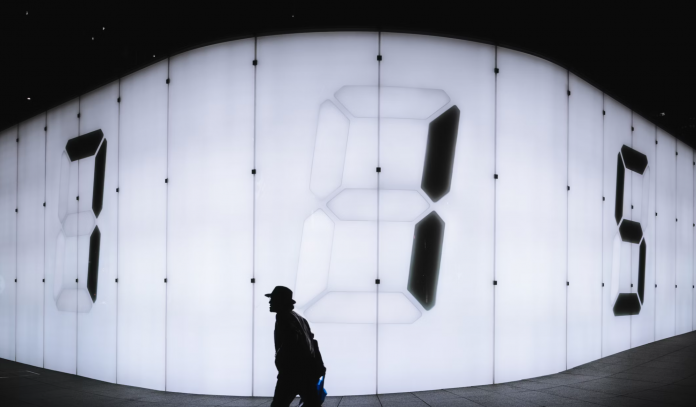When it comes to digital displays, more is not always better. In some contexts the number of displays significantly increases your return on investment. But that is predominantly in very specific contexts. Usually this goes for video walls. Meanwhile, for a small business looking to spend carefully, it’s important to know just how many digital displays are needed, from the entrance of the store all the way to the employee break room.
To start, we define the purpose of each display. Then we identify key areas and see how to best utilize digital technology at key locations at your place of business. Lastly, we look beyond the establishment and talk a bit about true outdoor advertising on a much larger scale. Let’s get some answers!
The purpose of a display
Every digital signage display needs to have a well-defined purpose, no matter where it is. Don’t just scatter them around and think “I’ll fill these in with something eventually.” Some displays act as information terminals, such as menu boards. Others promote sales and announce a call-to-action. Some are built around engagement and some simply provide aesthetic appeal.
Having a well-defined purpose for each display also helps with content planning and management. It ensures that the content is relevant, engaging, and consistently aligned with the display’s intended purpose. By avoiding clutter and focusing on specific objectives, it becomes much easier to maintain quality and keep the content up-to-date. Of course, there is such a thing as displays with multiple purposes and content types which rotate amongst themselves. Be mindful where they will be used best. This brings us to the next important topic of discussion: identifying key areas in your business ideal for displays. That in itself will tell you much about how many digital displays you need!
Identify key areas
Retail stores can benefit from several digital displays showcasing the latest collection items. Meanwhile, coffee shops would create a nuisance if displays in the windows were to obstruct the view for patrons looking to enjoy a pleasant view.
Similarly, digital signage menu boards are excellent additions in quick-service restaurants, but don’t really belong in fine dining establishments. The key is to identify key areas and the context and ambiance connected to them. Then see if there is room for digital displays and in what quantity they can enhance the environment. Let’s use the fine dining example again. While menu boards might not be ideal, we can put up some ambient digital art to elevate the mood.
Or instead of the typical wall-mounted digital displays, perhaps interactive wine lists presented on tablets may be more exciting. Of course, trust your instincts on this matter and tap into your creative side. Perhaps even a specials menu board belongs here, if it blends well into the environment and succeeds in elevating the experience.
Waiting areas, service desks, employee break rooms, checkout counters, lounges, lobbies, elevators, beauty parlor reception desks, and the product floor are just some of many other examples of areas which can benefit from digital signage. Identify which of these exist in your business and establish which digital displays can be beneficial here.
Coverage and context
Moving past the purpose of decor, when digital signage aims to deliver a message, it’s very important to keep the coverage in mind. How many people can see the display clearly? How many displays should have the same content? To answer this question, consider factors such as placement, display size, resolution, font size, and viewing angles.
In a bustling airport, displays should be placed at key areas. These include security checkpoints, crucial intersections, waiting areas, and boarding gates so everyone has access to important flight information. The same rule applies for trade shows, conferences, or stadiums. High-traffic areas are most important. These include entrances/exits, waypoints, checkouts, and reception areas. Essentially these are areas where all visitors will pass at one point or another. Thus, they should be well covered.
The number of people who can see the display clearly directly impacts its effectiveness and the reach of the communicated message. Be mindful of the context in which you broadcast key campaigns. A clear example is highlighting product sales in appropriate isles, pushing loyalty programs by checkout lanes, and placing greetings at entrances.
Content balance
With the knowledge of key areas and the mindset of consumers at these locations, how will you section content across your displays? Here are a few content type combinations to consider based on location.
- Storefronts can predominantly be a place for image campaigns, product ads, exclusive offers, and everything else which invites the customer to step inside. As occasional content, include light entertainment, interactive content, or brand-focused content here.
- Lobbies and waiting areas typically offer a healthy balance of multiple content types. They include promoting services of interest, entertaining visitors by making them comfortable and passing the time faster, as well as elevating the ambiance.
- Hallways, corridors, as well as reception areas don’t need to be so focused on selling anything but rather enhancing the ambiance and directing the consumer where they need to go.
- Sales areas should focus on providing pricing and other product-related information.
- Checkout registers mark the finale of the customer’s journey. They should include loyalty programs, any applicable offers or discounts, return policies, as well as entertainment in case the waiting time rises for any reason.
Of course, these are general guidelines. Keep in mind the areas in your business and your customers, their motivations and their uniqueness to deliver the best experience possible!
Broader Out-of-Home campaigns
On the broader view of outdoor advertising, the weight of display count changes significantly. Above we referred to displays within your own establishment. Meanwhile, if you’re interested in the reach of digital signage on a broader scale, take a look at recent research done by the Swiss advertising tech firm Adtrac in an effort to get a handle on the number of displays needed to deliver messages home and make an impact in outdoor advertising.
In a nutshell, they concluded that a campaign needs a minimum of 5 displays to make an impact, 10 or more being even better. Do keep in mind, however, that this context refers to outdoor advertising in various locations. Thus this context is a bit different from what we discussed above. But it is still worth exploring should you consider investing in it! This could also apply to you if you have multiple outdoor locations of your own or are building partnerships to push out a campaign in multiple locations at once.
Regardless of the specific scenario, digital signage software can help with the task of broadcasting content on multiple locations with precision and proof-of-play reports!
Cover image by Ryoji Iwata.








